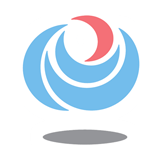Kanazawa Port and Airport Office is developing the community with "Ports"

Ministry of Land, Infrastructure, Transport and Tourism
Hokuriku Regional Development Bureau
Kanazawa Port and Airport Office
MENU
 Port Q&A
Port Q&A
Let’s Become Port Experts!
Haven't you thought, "What is it?" or "Why is it?" about the sea or port? Why don't you ask questions and find out!
- The volume of trade from Overseas to Japan (both imports and exports) is 1.3 billion tons annually. 99.7% of the goods are transported from the other port by ships, and 0.3% of the goods are carried by airplanes.
Regarding energy supply, Japan depends on the import form overseas for more than 90%. As for food, 60% is coming from overseas. *Major Ports...Ports that are the bases of domestic and international transportation on the sea, and essential to the development of industries and economy in Japan.
* Local Ports...Ports that bear closely on the lives of local people.- Airports in Japan are classified into hub airports, regional airports,other airports and joint-use airports. Hub airports are subdivided into privately managed airports, national airports, and special regional airports.
- We use the unit, "ton", to describe the size of ships.
Why do we use "ton"? Long time ago, the size of ships were expressed by the numbers of the (wine) barrels the ship can carry. The sound, "tun", when you hit, became "ton" later. - The colors of lighthouses, which guide the ships to the entrance of the port, are determined by the law. (Navigation Aids Act) When a ship enters the port, the ship should see the red light house on the right and the white one on the left.
- Have you seen many large boxes stacked in the port? They are called "kontena", meaning 'container'. There are two sizes, one is 12 meters long, the other is 6 meters long and both are 2.6m in height. They are almost as big as large buses. There are various kinds of containers, such as a normal container that carries daily goods, refrigerated one used for foods etc. and a tank that has chemicals or drinks in it.
- The crane that looks like a giraffes in the port is called "gantry crane". It is very useful for unloading many containers fast. The operation room is located at upper part of the crane. The operator looks down the port and operates the crane like a UFO catcher to unload the containers quickly.
- Wave dissipating concrete blocks are in a variety of shapes designed to create some gap between blocks when they are stacked. The gap absorbs the energy of waves effectively.
- Yes, we do. It is called, the "Act on Preventing Collision at Sea." There are paths at sea, called "kouro" (channel or route), and ships must keep to the right. On the sea, light beacons are used instead of signs on the road.
- People called ports in many different ways, such as “tsu”, “tomari”, “minato (湊)” and “minato(水門). Later, people combined the Chinese character, 巷 (chimata), meaning lively place, and sanzui(氵)meaning water, to make a Chinese character ‘”minato (港)”
How much of goods come to Japan through the ports?
What kinds of ports are there?
What kinds of airports are there?
How do you describe the size of ships?
Why are there white lighthouses and red lighthouses?
What do you know about containers?
Have you seen the crane that look like a giraffe in the port?
Why are those wave dissipating concrete blocks (tetrapods) shaped like that?
De we have traffic rules for transportation on the sea?
How did a port named "Minato"?
Sea Wave Information in Ports(Real-time)
 You have access to the real-time wave information at all ports in Japan. Broadcasted by The Nationwide Ocean Wave information network for Ports and Harbors (NOWPHAS)
You have access to the real-time wave information at all ports in Japan. Broadcasted by The Nationwide Ocean Wave information network for Ports and Harbors (NOWPHAS) You can check the information of waves in the Hokuriku region from your mobile phone.
You can check the information of waves in the Hokuriku region from your mobile phone.



